
Tapioca is less used in American kitchens than flour and cornstarch, the two workhorse thickeners we grew up with. It is mostly seen as the gently chewy spheres in tapioca pudding, or the larger pearls in bubble tea and similar beverages. However, both quick-cooking tapioca and tapioca flour have many more uses for a savvy, time-conscious cook.
About Tapioca
Tapioca starch is processed from cassava, a staple root crop of the world's tropical countries. The roots are shredded and cooked, and the starch is extracted and refined from the cooking water. The pure starch, known as tapioca flour, is a powerful thickener but becomes stringy if overcooked or stirred too frequently. To counter that tendency, manufacturers process the starch into small balls, which are par-cooked by steaming. When these balls are added to a pudding or pie filling, they provide both thickening power and balls of sweet, chewy gel as a contrasting texture.
Tapioca Flour
Tapioca flour is very neutral, so it can be used in dishes with delicate flavors. It thickens at a lower temperature than most starches, as little as 126 degrees Fahrenheit, so it's ideal for use with delicate ingredients that won't stand up to boiling. It's also useful as a last-minute fix for a sauce that hasn't thickened properly. Tapioca flour is superior to cornstarch for those who cook and bake ahead because sauces and pie fillings will maintain their texture when frozen and thawed. Cornstarch has an unfortunate tendency to "bleed" moisture when thawed, and its consistency suffers.
Quick-Cooking Tapioca
Quick-cooking tapioca is a form of tapioca "pearls" that is par-cooked a second time, cooking the starches almost completely. The pearls quickly absorb enough of their cooking liquid to rehydrate, thickening the liquid in the process. Quick tapioca is primarily cooked in sweetened milk to make tapioca pudding, but some recipes also call for it in pie filling. It is an effective thickener, though some object to the chewy pearls in their pie. The tapioca can be powdered in a spice mill or blender to make it more unobtrusive, or tapioca flour can be used instead.
Using Tapioca
Tapioca pudding requires no eggs for thickening, and if milk is used rather than cream it is low in fat. Standard recipes call for milk or cream, but there is no reason to limit your choices. Make kid-friendly versions with fruit juice or brightly-colored tapioca pearls.For a sophisticated adult dessert, use espresso as your cooking liquid. Vanilla-flavored tapioca pudding pairs well with most fruits, and can be layered in dessert dishes for visual appeal. The extra-large tapioca pearls used in bubble tea are available in Asian groceries, and can be prepared at home for use with any favorite beverage.
Related Articles
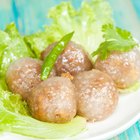
How to Cook Tapioca Balls
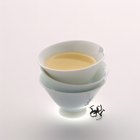
Substitute for Vanilla Custard Powder
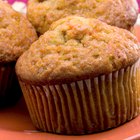
Substitute for Manioc Starch

How to Make Large-Pearl Tapioca
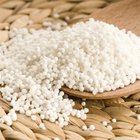
What Is the Nutritional Value of ...

Do You Use Flour or Corn Starch to ...

Adding Vanilla Pudding to Whipping Cream

Can You Make Dumplings With Corn Starch?

How to Substitute Cornstarch for ...

Corn Starch Vs. Rice Flour As ...

Ingredients of Gelatin
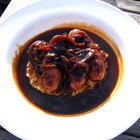
Uses for Wheat Starch

Differences Between Tapioca Starch and ...

What Is Quick Cooking Tapioca?
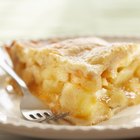
What Can I Substitute for Cornstarch?

Can You Reheat Tapioca?

Uses of Cassava Flour
How to Use Arrowroot to Thicken a Fruit ...

Custard vs. Pastry Cream
What Do Bakeries Use in Their Whipped ...
References
- "On Food and Cooking: The Science and Lore of the Kitchen"; Harold S. McGee; 2004
- "The Professional Pastry Chef"; Bo Friberg; 2002
- The Cook's Thesaurus; Starch Thickeners; Lori Alden; 2005
- Ellen's Kitchen: Tapioca and Minute (R) Tapioca
- Epicurious; Fruit-on-the-Bottom Tapioca Pudding; Ian Knauer; July 2009
- Epicurious; Espresso Sambuca Tapioca Pudding; October 2006
Writer Bio
Fred Decker is a trained chef and prolific freelance writer. In previous careers, he sold insurance and mutual funds, and was a longtime retailer. He was educated at Memorial University of Newfoundland and the Northern Alberta Institute of Technology. His articles have appeared on numerous home and garden sites including GoneOutdoors, TheNest and eHow.
Photo Credits
Brand X Pictures/Brand X Pictures/Getty Images